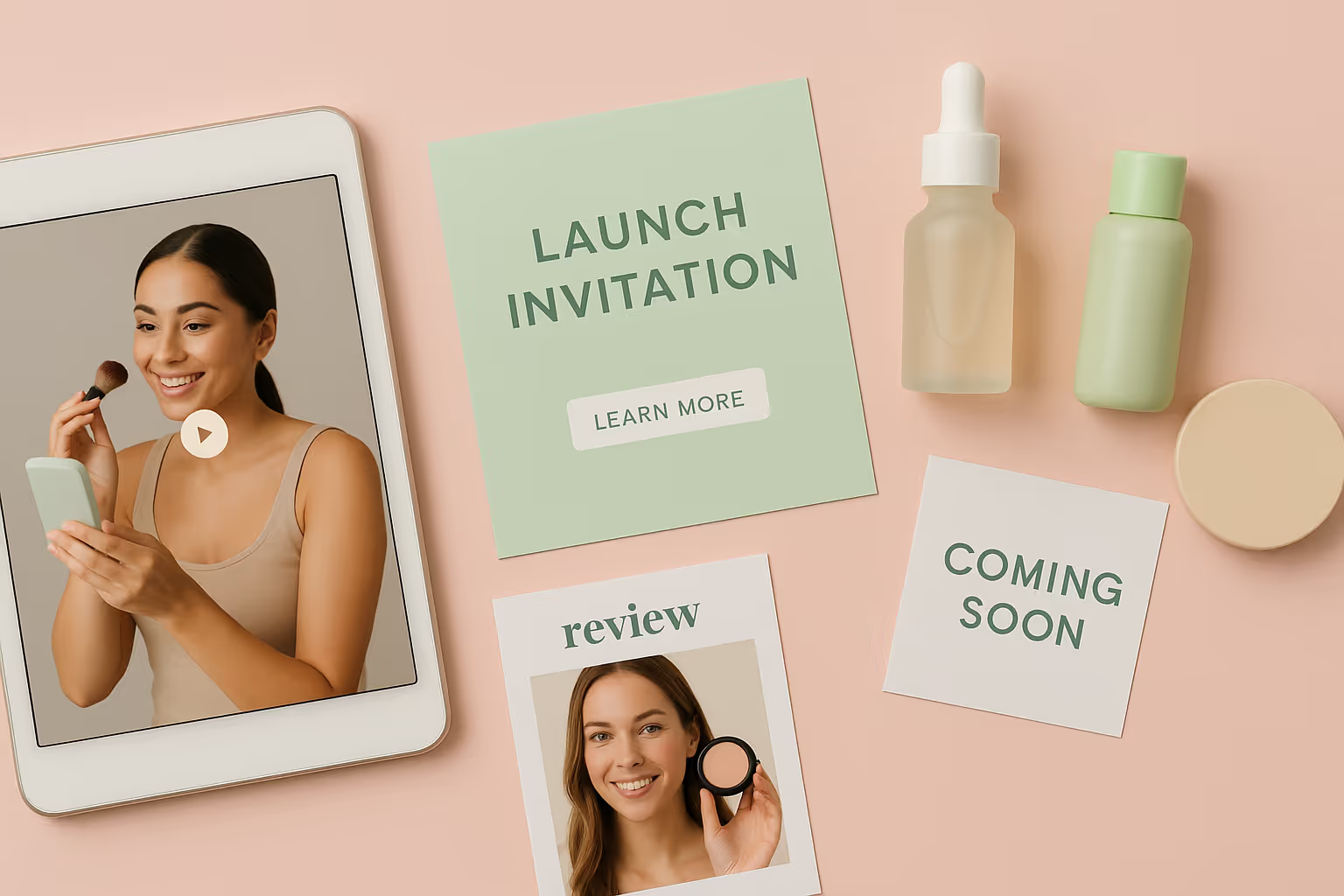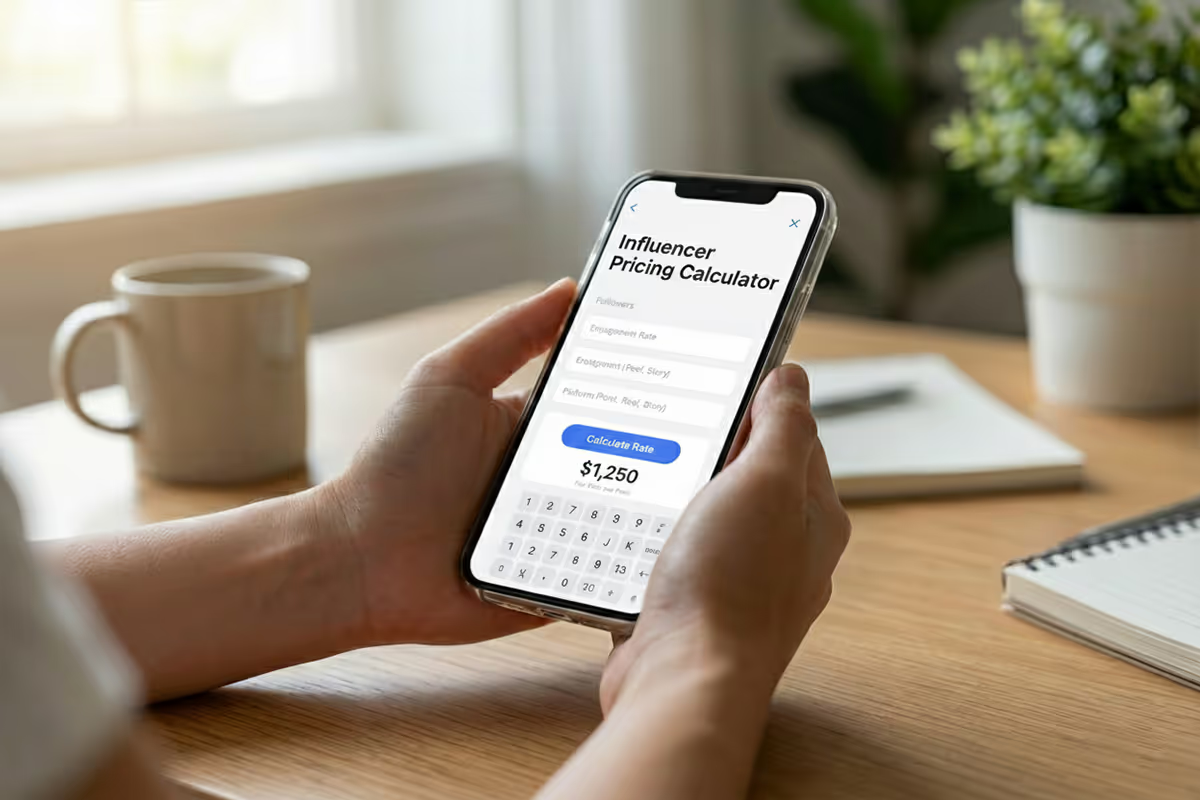How Do Influencers Drive the Sales of Beauty Products: Influencer Tactics

The beauty industry has seen a major shift, with influencers now key to driving product sales. These creators shape how consumers discover and buy beauty items. Their authentic voices help brands, from giants to indie labels, build trust fast.
With global ad spend expected to surpass $5 billion by 2025, influencer marketing isn’t optional. Over 60% of consumers trust influencer recommendations over ads. The connection they create translates directly into buyer confidence and action.
For brands aiming to grow, understanding how influencers drive the sales of beauty products is essential. It’s not just about reach, it’s about relevance. Smart influencer partnerships fuel visibility, engagement, and long-term loyalty.
Effective Influencer Tactics That Drive the Sales of Beauty Products
Beyond simply featuring products, successful beauty influencers employ specific content strategies that effectively drive sales conversion.
Tutorials and How-To Content
Step-by-step application tutorials provide immense value while showcasing products in action. This content type:
- Demonstrates visible results in real-time
- Educates consumers on proper usage
- Shows the versatility of products
- Reduces uncertainty about application techniques
The educational component creates a perfect context for product recommendations that don't feel forced or overly promotional.
Before-and-After Demonstrations
Nothing sells beauty products like visible results. Effective before-and-after content:
- Provides clear evidence of product efficacy
- Creates an emotional connection to potential outcomes
- Addresses specific pain points (acne, aging, dullness)
- Builds anticipation for similar results
When executed authentically, these transformations serve as powerful testimonials that directly drive purchase intent.
Limited-Time Offers and Discount Codes
Personalized discount codes and limited-time offers create urgency while allowing brands to track influencer performance. These promotions:
- Provide measurable attribution for sales
- Create FOMO (fear of missing out) among followers
- Reward engaged followers with exclusive savings
- Convert casual interest into immediate purchase action
Pro tip: The most effective beauty influencer discount codes aren't excessively high (typically 10-15%) as extreme discounts can devalue the brand perception while not significantly increasing conversion compared to moderate offers.
Types of Influencers Driving Beauty Sales

Not all influencers drive beauty sales in the same way. Different categories of influencers serve distinct roles in the beauty marketing ecosystem.
Mega and Celebrity Influencers
With millions of followers, these influencers create massive awareness but often generate less direct conversion compared to smaller creators. They excel at:
- Launching new beauty brands or major product lines
- Creating initial buzz and awareness
- Lending celebrity-like endorsement value
- Driving trend adoption across the industry
Mid-Tier Specialists
These influencers typically have followings between 100,000 and 1 million and often focus on specific beauty niches. They balance reach with relatability and frequently drive significant sales through:
- Detailed product knowledge in their specialty area
- Strong topical authority (skincare science, clean beauty, etc.)
- Higher engagement rates than mega influencers
- Dedicated follower bases that trust their expertise
Micro and Nano Influencers
With smaller but highly engaged audiences (typically under 100,000 followers), these creators often generate the highest conversion rates for beauty brands. Their effectiveness comes from:
- Hyper-engaged, loyal communities
- Perceived authenticity and accessibility
- Specific demographic or interest targeting
- Higher trust levels due to perceived peer-like status
Measuring Influencer Impact on Beauty Sales
Understanding how influencers truly affect beauty product sales requires sophisticated measurement approaches beyond simple follower counts.
Attribution Models
Modern brands track influencer sales impact through:
- Custom discount codes unique to each influencer
- Affiliate links with tracking capabilities
- UTM parameters for website traffic attribution
- Platform-specific shopping features (Instagram Shop, TikTok Shop)
The most sophisticated beauty brands combine these methods with post-purchase surveys asking, "How did you hear about us?" to capture attribution that technical tracking might miss.
Engagement Metrics That Predict Sales
Savvy beauty marketers look beyond vanity metrics to indicators that truly correlate with sales:
- Save rates on content (indicating intent to reference later)
- Comment sentiment and purchase intent signals
- Story swipe-ups and link clicks
- Content sharing within private messages
These engagement signals often predict purchase intent more accurately than simple likes or view counts.
Building Effective Beauty Influencer Partnerships
Creating productive influencer relationships requires a strategic approach beyond simply hiring popular creators. The most successful beauty brands follow specific partnership principles.
Finding the Right Fit
The most effective influencer partnerships align brand values with creator aesthetics and audience demographics. Key considerations include:
- Audience alignment with target customer profiles
- Content quality and production values
- Previous authentic interest in similar products
- Engagement quality (not just quantity)
Rushing into partnerships based solely on follower count often leads to underwhelming results. Brands seeing the strongest sales impact take time to identify influencers whose authentic voice resonates with their target customers.
Long-Term Ambassador Relationships
While one-off promotions can drive short-term sales spikes, ongoing partnerships generate sustainable growth. Long-term ambassador relationships:
- Build cumulative trust with repeated exposure
- Allow influencers to show consistent results over time
- Create authentic integration into routine content
- Develop deeper product knowledge and enthusiasm
Many beauty brands find that consistent partnerships with fewer, well-matched influencers outperform broader, shallow promotional efforts.
Platform-Specific Beauty Influencer Strategies
Each social platform requires tailored approaches to effectively drive beauty product sales through influencer partnerships.
Instagram Strategies
As the traditional home of beauty influencer marketing, Instagram offers multiple formats for driving sales:
- In-feed posts for high-quality visuals and product details
- Stories for day-to-day authentic usage and direct linking
- Reels for trending, attention-grabbing demonstrations
- Live sessions for Q&A and real-time demonstrations
Beauty brands typically see the strongest sales impact from coordinated campaigns that leverage multiple Instagram formats with consistent messaging.
TikTok's Beauty Sales Impact
TikTok has emerged as a powerhouse for driving beauty product sell-outs through viral content. Effective TikTok beauty content:
- Focuses on dramatic, visible results
- Utilizes before-and-after formats
- Incorporates trending sounds and formats
- Often highlights single hero products rather than routines
The platform's viral nature can create overnight sensations, with products frequently selling out after trending on TikTok. The integration with TikTok Shop has further streamlined the path from discovery to purchase, making it easier than ever to convert viewers into customers.
YouTube's Enduring Influence
Despite newer platforms, YouTube remains crucial for detailed beauty content that drives considered purchases:
- In-depth reviews for higher-priced items
- Comparison videos evaluating multiple options
- Scientific and ingredient-focused analysis
- Long-form tutorials showing a complete application
YouTube beauty content often influences higher-value purchases where consumers seek detailed information before committing.
Launching Beauty Products With Influencer Partnerships

Influencers provide powerful go-to-market strategies for new beauty brands or product launches that can create immediate traction.
Pre-Launch Seeding Strategies
Strategic product seeding before official launch can build anticipation and early demand:
- Sending advanced samples to select influencers
- Creating exclusive preview content
- Building anticipation through "coming soon" mentions
- Gathering initial feedback and testimonials
This approach generates organic buzz before products are available and creates a foundation for launch-day content.
Launch Day Coordination
Coordinated influencer activation on launch day creates maximum impact:
- Synchronized posting schedules across multiple influencers
- Complementary content types (tutorials, reviews, unboxings)
- Consistent messaging about key product benefits
- Clear call-to-actions directing to purchase channels
This coordinated approach creates a perception of ubiquity and momentum that drives early adoption.
Building a Beauty Brand With Influencers
Beyond just product sales, influencers help shape overall brand perception and positioning.
The most successful beauty brands create distinctive identities that influencers can authentically amplify, reinforcing key messaging and brand values with every partnership.
Creating Your Influencer-Driven Beauty Sales Strategy
For beauty brands looking to harness influencer power, a systematic approach yields the strongest results.
Step 1: Define Clear Objectives
Begin by establishing specific goals beyond generic "awareness":
- New customer acquisition targets
- Sales volume expectations
- Specific demographic reach goals
- Content generation for owned channels
These objectives will guide influencer selection and campaign structure.
Step 2: Develop a Multi-Tier Approach
Effective beauty influencer strategies typically leverage different creator levels:
- Anchor partnerships with select mid-tier specialists
- Supplement with micro-influencers for niche targeting
- Consider occasional larger activations for broader awareness
This balanced approach maximizes both conversion quality and reach.
Step 3: Create Compelling Offers
Equip influencers with offers that drive action:
- Exclusive bundle combinations
- Limited-edition packaging
- Gift-with-purchase incentives
- Tiered discount structures
The most effective offers provide clear value while maintaining brand positioning.
Step 4: Amplify Organic Success
When specific influencer content performs exceptionally well:
- Convert high-performing organic content into paid ads
- Request usage rights for brand channels
- Develop expanded partnerships with top performers
- Create case studies to attract similar influencers
This amplification strategy maximizes return on high-performing content beyond its organic reach.
Future Trends in Influencer-Driven Beauty Sales
The beauty influencer landscape continues evolving, with several emerging trends reshaping how creators drive product sales.
Live Shopping Events
Interactive live shopping formats are gaining traction, combining:
- Real-time demonstrations
- Direct audience Q&A
- Limited-time offers
- Immediate purchase capabilities
These events create appointment viewing and urgency that drives conversion, particularly for private label skincare brands looking to educate consumers about their unique formulations.
Value-Driven Content
As consumer skepticism grows, beauty influencers are shifting toward value-first approaches:
- Ingredient education and transparency
- Honest comparisons between options
- Price-per-ounce analysis for premium products
- Long-term results documentation
This education-forward approach builds deeper trust that ultimately drives more sustainable sales growth.
Authenticity Through Transparency
Leading beauty influencers increasingly embrace transparency around:
- Sponsored relationships
- Product sourcing methods
- Personal results expectations
- Formulation details and limitations
Rather than undermining sales, this transparency strengthens conversion by building deeper audience trust.
Expert’s Tip: Tap Into Creator Whitelisting for Scalable Results
Most brands overlook creator whitelisting, where influencers grant advertising access to run paid ads through their profiles. This hybrid tactic combines authentic creator content with brand-controlled targeting, significantly boosting performance.
For brands exploring how influencers drive the sales of beauty products, this strategy unlocks scale without losing trust. It blends influencer credibility with paid reach, delivering higher ROI and stronger conversion consistency over time.
Leveraging Influencer Power for Your Beauty Brand
Influencer marketing continues to drive beauty industry success when done right. Brands that integrate authentic partnerships consistently outperform those using only traditional tactics.
For emerging brands, influencers offer direct access to consumers without relying on gatekeepers. By understanding what makes influencer strategies work, brands of all sizes can tap into this powerful channel.
FAQ
Related blogs

Influencer Pricing Calculator: Find Your Fair Rate for Posts, Reels & Stories
.avif)
How To Market Pet Products Through Storytelling: Win Attention, Build Trust, and Boost Sales Naturally
.avif)
How To Market Coffee To Gen Z: The High-Impact Blueprint Every Brand Needs
.avif)

